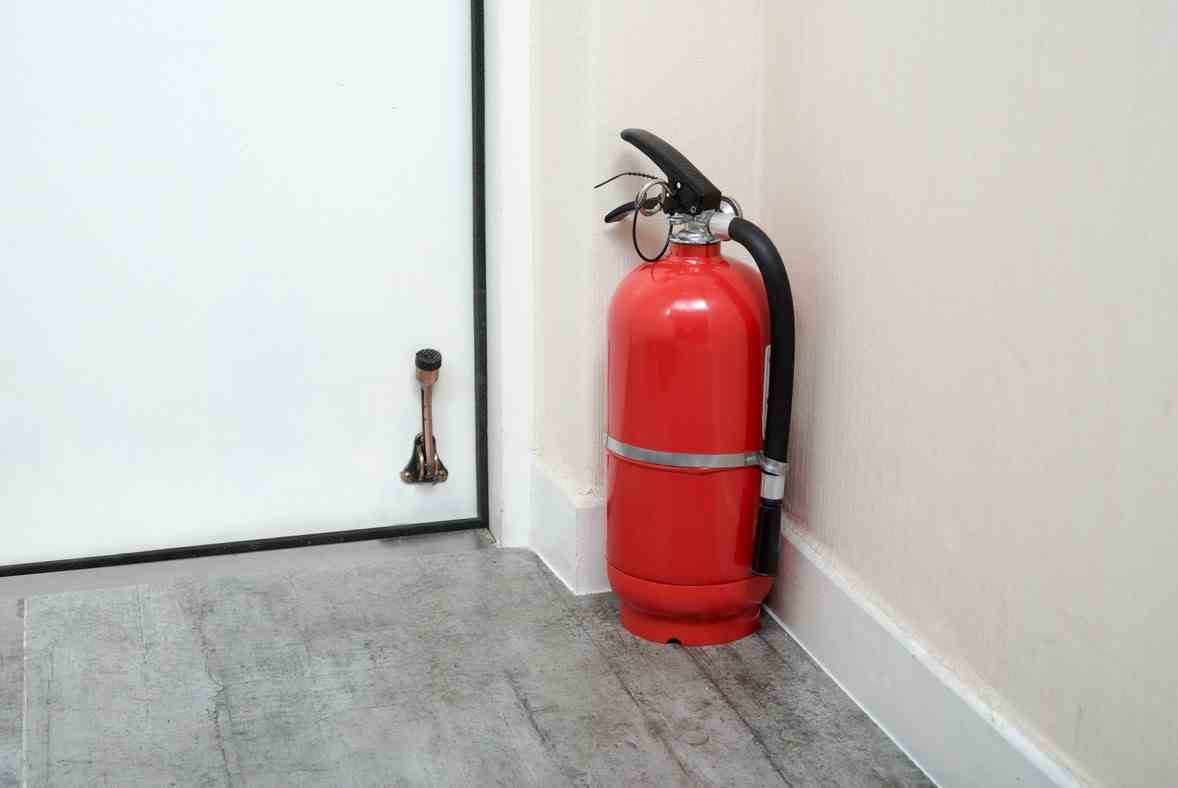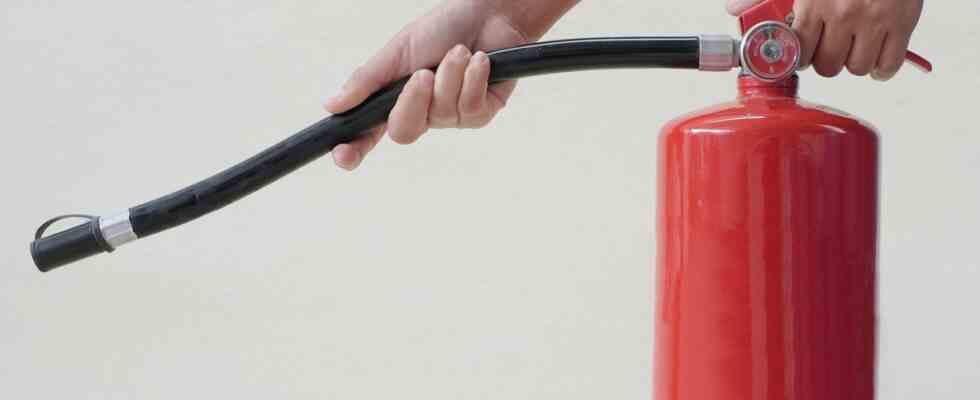The fire extinguisher, a major ally
The fire extinguisher is a more or less bulky device depending on the size you choose, which allows you toput out a fire. To do this, it projects a substance that varies according to the models. It can be chemical powder, gas, etc. It is very useful to put out a fire which has just started or which remains weak. In other cases, however, it does not replace firefighters, because if the flames have already spread, it will not be enough to extinguish them.
It should not be forgotten that there are approximately 250,000 home fire declarations with insurance each year. In a home, the causes of fire are diverse and the consequences can sometimes be dramatic. This is why it is essential to equip your accommodation with the following:
- One or more DAAF smoke detectorswhich is now required by law.
- Fire extinguisher which, as we have seen, has the advantage of allowing you to be safer at home and preventing what could be described as a minor incident from turning into a tragedy.
The main causes of fire
The main causes of house fires are as follows.
- Electrical installation : it may be faulty, outdated or overloaded.
- Housing heat sources : they can be cluttered which can cause fires to start.
- Cooking a dish : a fire can break out when the kitchen is left unattended while a dish is cooking, for example in the case of fat overflowing onto a flame or a hot surface.
- The cigarettes and the candles.
- A poor maintenance facilities and equipment.
- Finally, children who are not necessarily aware of the danger can be the cause of a fire starting. It is therefore important to make them aware.
The different types of fire extinguisher
To make things a little more difficult at the time of your choice, extinguishers come in different types, which depending on the type of fire, will be more or less effective. To understand, know that fires are divided into different classes depending on what is burning:
- Class A : Defines the fires of solid materials that make embers, such as paper, wood, fabric, etc.
- Class B : defines fires involving liquids or liquefiable materials, such as oil, grease, candles, plastics etc.
- Class C : Sets gas fires.
- Class D : Sets metal fires.
Now that you know what the different classes of fires are, here’s what you need to know about each type of fire extinguisher:
- Powder fire extinguisher : it is a multi-purpose extinguisher, since it can be used on type A, B or C fires. It makes it possible to respond to the most frequently encountered causes of fire. Moreover, when the temperatures are negative, it is the only one that can be used. The powder being very corrosive, it causes significant damage during its use.
- The water extinguisher with additive : it is used to fight against the flames of class A and B fires. Very irritating, it must not be projected on a person. In addition, it is a very corrosive solution for electrical connections.
- foam fire extinguisher : it contains the same product as the water extinguisher except that it has undergone a transformation. A compact and heavy foam is thus obtained which will make it possible to extinguish the flames of class A and B fires effectively without the risk of restarting. As before the product is very irritating and corrosive.
- The carbon dioxide (CO2) fire extinguisher : also called dry ice extinguisher. This is a solution that allows you to fight against class B fires of electrical origin. It acts by smothering the fire.
To conclude, it is preferable to opt for a powder extinguisherthe most versatile of all.
Choosing the right fire extinguisher
When you go to buy your fire extinguisher, it is necessary to choose it according to your needs and to ensure its efficiency and compliance.
- To be sure of having a compliant fire extinguisher, it is important to choose it according to NF EN3 standard, as well as with the CE mark. You know that it will be effective and will meet rigorously established specifications.
- You should also pay attention to its volume. This last information can be expressed in liters or in kilograms. You will thus be able to quantify the quantity of fuel on which the extinguisher will be effective. You will find this information on the device label.
- The weight is also a criterion to take into consideration in order to ensure that you can handle it easily. When a single fire extinguisher is too heavy, you can opt for two smaller ones so that you can easily use them.
- You should also think about where you will install your fire extinguisher in your accommodation. This location must be practical and the choice of the extinguisher must be made according to the space available to store it.
- Finally, the price of a fire extinguisher varies by device type.

The certification label
On the fire extinguisher you will find an approval label. The latter consists of letters preceded by numbers. These are typical homes. This information determines the effectiveness of the extinguisher:
- Letters correspond to the classes of fire covered, as we described them to you previously.
- The number corresponds to the maximum volume that can be extinguished by the extinguisher.
For instance, a fire extinguisher marked 34A can extinguish up to 34 kilograms of combustibles from a class A fire, i.e. solid materials forming embers.
The extinguisher’s average discharge time is also specified.
Where to buy a fire extinguisher?
For individuals, it is possible to buy a fire extinguisher in a DIY store, in a supermarket, etc. It is preferable toopt for a direct purchase rather than online. This way, you can ensure that you can carry the fire extinguisher you want. Indeed, some can be very heavy. In addition, you can seek advice, if necessary, to better choose your extinguisher.
For a powder extinguisher, it will be necessary to plan a budget between 30 and 90 €.

